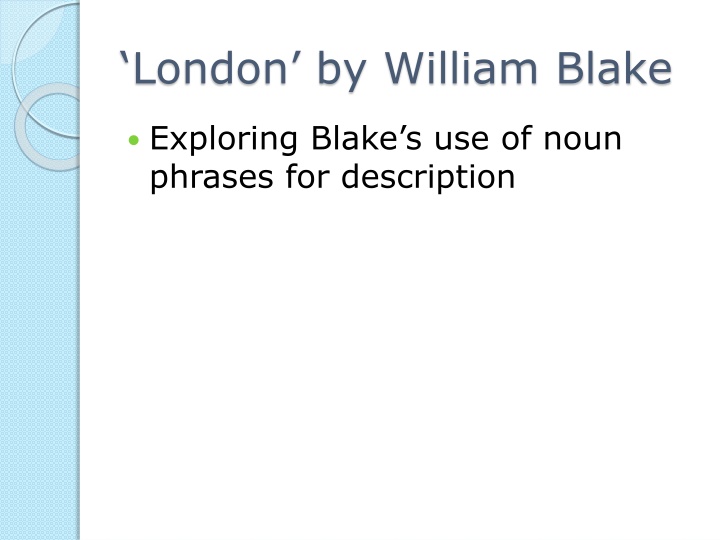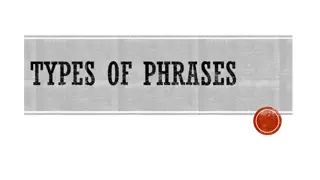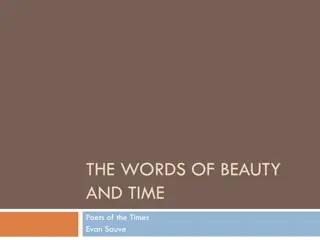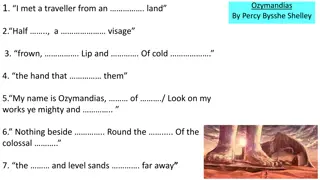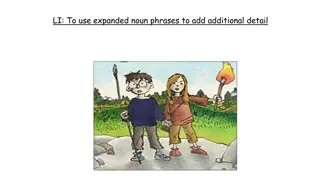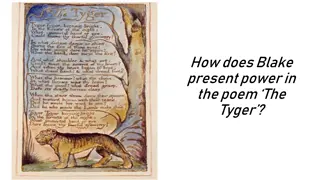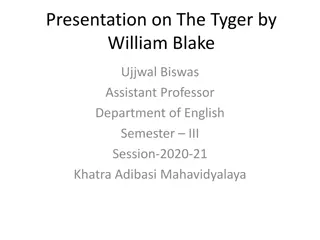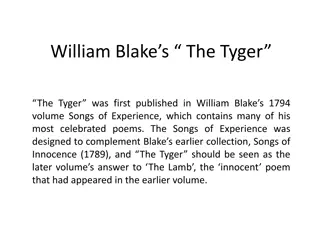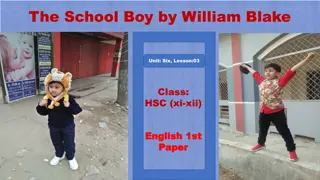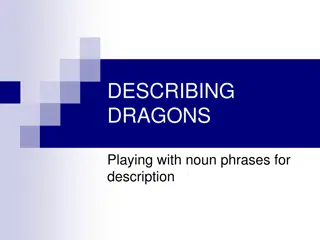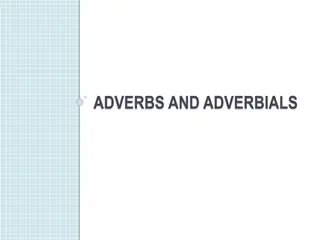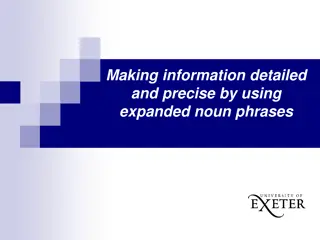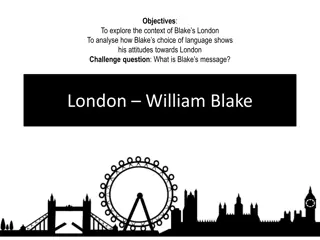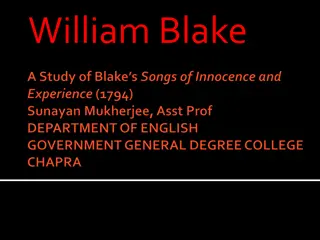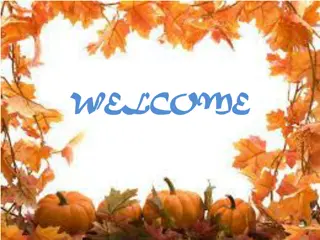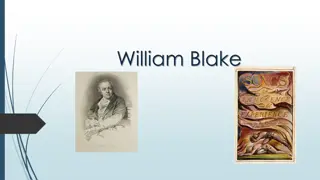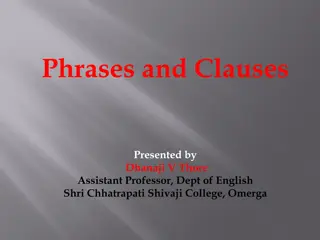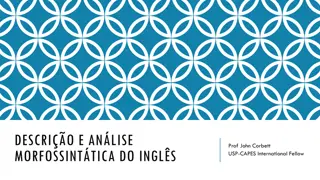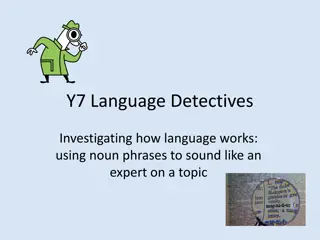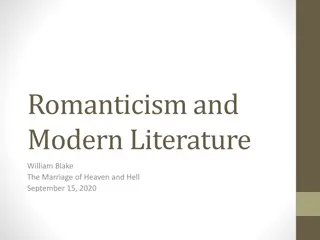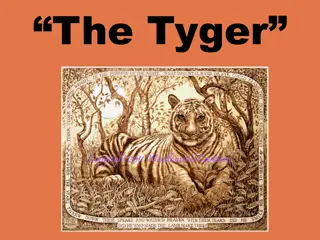Analysis of William Blake's Use of Noun Phrases in "London
Exploring William Blake's poem "London," this analysis focuses on the use of noun phrases to describe people, places, objects, and emotions. By examining the nouns chosen by Blake and the patterns they form, we gain insight into the vivid and evocative imagery he creates. The expanded noun phrases in the poem add layers of meaning and convey a sense of despair, oppression, and societal decay in the city of London. Through a detailed examination of the noun phrases used, the reader can uncover the deep complexities and emotions woven throughout the poem.
Download Presentation

Please find below an Image/Link to download the presentation.
The content on the website is provided AS IS for your information and personal use only. It may not be sold, licensed, or shared on other websites without obtaining consent from the author.If you encounter any issues during the download, it is possible that the publisher has removed the file from their server.
You are allowed to download the files provided on this website for personal or commercial use, subject to the condition that they are used lawfully. All files are the property of their respective owners.
The content on the website is provided AS IS for your information and personal use only. It may not be sold, licensed, or shared on other websites without obtaining consent from the author.
E N D
Presentation Transcript
London by William Blake Exploring Blake s use of noun phrases for description
London by William Blake street Thames face weakness woe cry man infant fear ban manacles chimney sweeper church soldier sigh blood palace walls streets harlot curse tear plagues hearse Look at the nouns Blake chooses to show people, places, objects and feelings. Can you see any links or patterns? Invent different headings under which you can group them e.g. human emotions . What impression of London does Blake give you through his choice of nouns?
Look at the way Blake gives us more detail about the people, places, objects and feelings in his poem through expanded noun phrases. The extra information added to the head noun changes (or modifies ) how we see things: how would you explain the difference between streets and midnight streets or between hearse and the Marriage hearse ? each charter dstreet the charter dThames everyface marks of weakness marks of woe everycryof every Man every Infant s cry of fear everyvoice everyban the mind-forg dmanacles the Chimney-sweeper s cry every blackning Church the hapless Soldier s sigh Palacewalls midnightstreets the youthful Harlot s curse the new-born infant s tear the Marriage hearse How many different patterns can you see in the way these noun phrases are formed? Which word is repeated most often? Why? Noun phrases give us a complete picture or idea. Which ones from the poem do you find most unusual, thought- provoking or puzzling?
I wander thro' each charter'd street, Near where the charter'd Thames does flow, And mark in every face I meet Marks of weakness, marks of woe. What do you notice about the use of noun phrases now you can see them in the context of the whole poem? In every cry of every Man, In every Infant s cry of fear, In every voice: in every ban, The mind-forg'd manacles I hear. Are there any other language features that you would want to focus on? How do they enhance the meaning of the poem? How the Chimney-sweepers cry Every blackning Church appals, And the hapless Soldier s sigh Runs in blood down Palace walls. But most thro' midnight streets I hear How the youthful Harlot s curse Blasts the new-born Infant s tear And blights with plagues the Marriage hearse.
